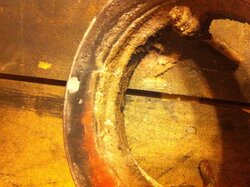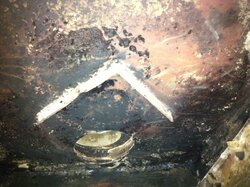Zero-creosote is good evidence of a flue fire, all the evidence was consumed by the fire.
My bad, I was going off the wrong assumption. I always thought that black crispy stuff was left behind in some amount.
In the pic, it looks like several feet of damage.
Correct. But for the flue fire to have consumed all the evidence it would have to of been burning inside the top of the stove and the first few inches of the flue as well as the next several feet as there is no creosote anywhere.



